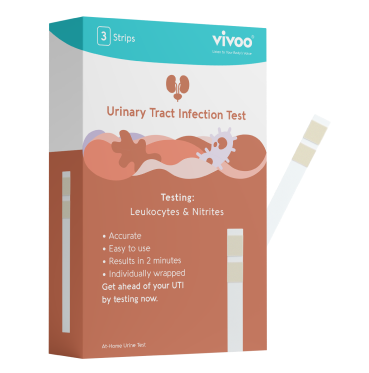Dry socket, also known as alveolar osteitis, is a condition that can occur after the extraction of a permanent adult tooth. It happens if the blood clot where your tooth was pulled out dislodges, dissolves, or never forms before healing. This results in the exposure of your underlying bone and nerve endings.
Dry socket also causes the wound to get clogged with food or debris, which can lead to infection. Further study is still needed to determine the specific causes of dry socket. The following are the most typical causes:
- Bacterial infection
- An impacted wisdom tooth
- Trauma at the surgery site
Treatment options for dry socket are available, for which your dentist or oral surgeon might recommend. However, if you have to wait for any treatment, these home remedies might help relieve your discomfort.
How To Detect A Dry Socket
Pain is the most prevalent sign of dry socket. Dry socket is a painful condition that can occur after a tooth is extracted. It's a searing discomfort that might last for many days following surgery. However, if the discomfort does not improve, you may have begun to develop a dry socket.
Symptoms include intense pain radiating from the affected area, an empty or visibly bone-filled extraction site,and bad breath accompanied by an unpleasant taste in your mouth.
Severe pain or bleeding is not typical after having a tooth pulled out. Some discomfort is acceptable, but it should not last for hours.
Those who smoke, use oral contraceptives, and don’t adhere to proper postoperative care increase their risk of developing dry socket following their procedure.

The Danger of Dry Sockets
Dry socket can be very painful, making it impossible to ignore. However, if left untreated, it may lead to more difficulties. Delayed healing is the most prevalent consequence. If you do develop a dry socket, additional medicated dressings and close monitoring is required to ensure that it heals appropriately.
In addition, your socket might get infected. If it is left untreated, the infection can spread to your bone. Oral or injectable antibiotics may be required to prevent the infection from spreading further.
With the exception of allergic reactions, there are little risk to trying home remedies to treat dry socket, but you should see your doctor first to ensure that these treatments are safe for you.
6 Useful At-Home Remedies For Dry Socket
Dry socket is painful and can prolong the healing process after having a tooth extracted. Fortunately, there are a few things you can do at home to ease the pain and speed up the healing process. Here are 6 useful at-home remedies for dry socket:
Warm Water
Even if your oral surgeon prescribes medicine, they will also advise you to clean the afflicted region many times a day with warm salt water following the procedure. It may aid in the elimination of germs and the reduction or prevention of subsequent illness.
Combine 12 teaspoons of salt with 8 ounces of warm water. Swirl it about in your mouth for a minute, or use it to flush out the dry socket. Perform this at least three times every day, preferably after eating. The high sodium level of this mixture will help fight off the bacteria in your mouth.
Clove Oil
Eugenol is found in clove oil, and has anesthetic, anti-inflammatory, and antibacterial properties. It may relieve pain and prevent infections from forming or spreading in your mouth. As a result, clove oil is sometimes utilized in professional dry socket pastes. Talk to your dentist or oral surgeon before taking it as a home cure.
But it is good to keep in mind that rash, skin irritation, and painful gums are some of the possible side effects of using clove oil. You can mix clove oil into a packet of sterile gauze, and dab the gauze directly on the afflicted region. Only use the gauze for 20 minutes at a time until you're certain there will be no negative effects.
Honey
Honey has antibacterial and anti-inflammatory properties. It can assist in calming your wound and relieving the discomfort you're feeling.
Soak a cotton ball or gauze in honey before applying it to your dry socket. You may keep the gauze on for many hours, but be sure you check on it regularly.

Home Heat Therapy
To minimize swelling, you can apply cold packs to your face for fifteen minutes at a time in the first 24 hours after you have a tooth extracted. After that, you may control any discomfort by applying heat, namely by using warm washcloths.
Heat is likely to be the most effective for relieving dry socket pain, but the cold can also help numb your nerves more effectively. Try them all and discover which one works best for you. Make sure you don’t apply anything that is too hot, and press it on the painful cheek.
Black Tea Bags
Tannic acid is found in black tea, and can function as a natural antibacterial agent while also lowering swelling and discomfort.
Try soaking a tea bag for five minutes in a cup of hot water. After it has cooled, remove it and squeeze out the extra water. For this home remedy to be effective, the tea bag should be chilled. If you put it in the refrigerator instead of the freezer, it can also work as a cold compress.
Gently bite down on the tea bag to hold it in place for about 15 minutes. After 15 minutes, rinse your mouth with the leftover cold tea.
Chamomile Tea
Chamomile contains antioxidants that aid in healing. Its anti-inflammatory properties may help relieve swelling and discomfort caused by your dry socket right away. Most supermarkets stock chamomile, and we highly recommend it for following a healthy diet.
Chamomile tea bags may be used in the same way as black tea bags. Place the tea bag in boiling water for 5 minutes before removing and cooling. Apply the tea bag on to the afflicted region for 15 minutes. If this is too long, then you can also just drink the tea after it has cooled.
Dry socket syndrome can cause terrible pain. You should get it treated as soon as you feel any symptoms. While waiting for an appointment with your oral surgeon, you can control your symptoms and discomfort with the home therapies listed above.
Although dry socket is painful, it responds swiftly to treatment. Your symptoms should begin to fade immediately after getting treatment and should be completely gone in 3-4 days. If not, schedule another appointment with your dentist for another treatment option.















